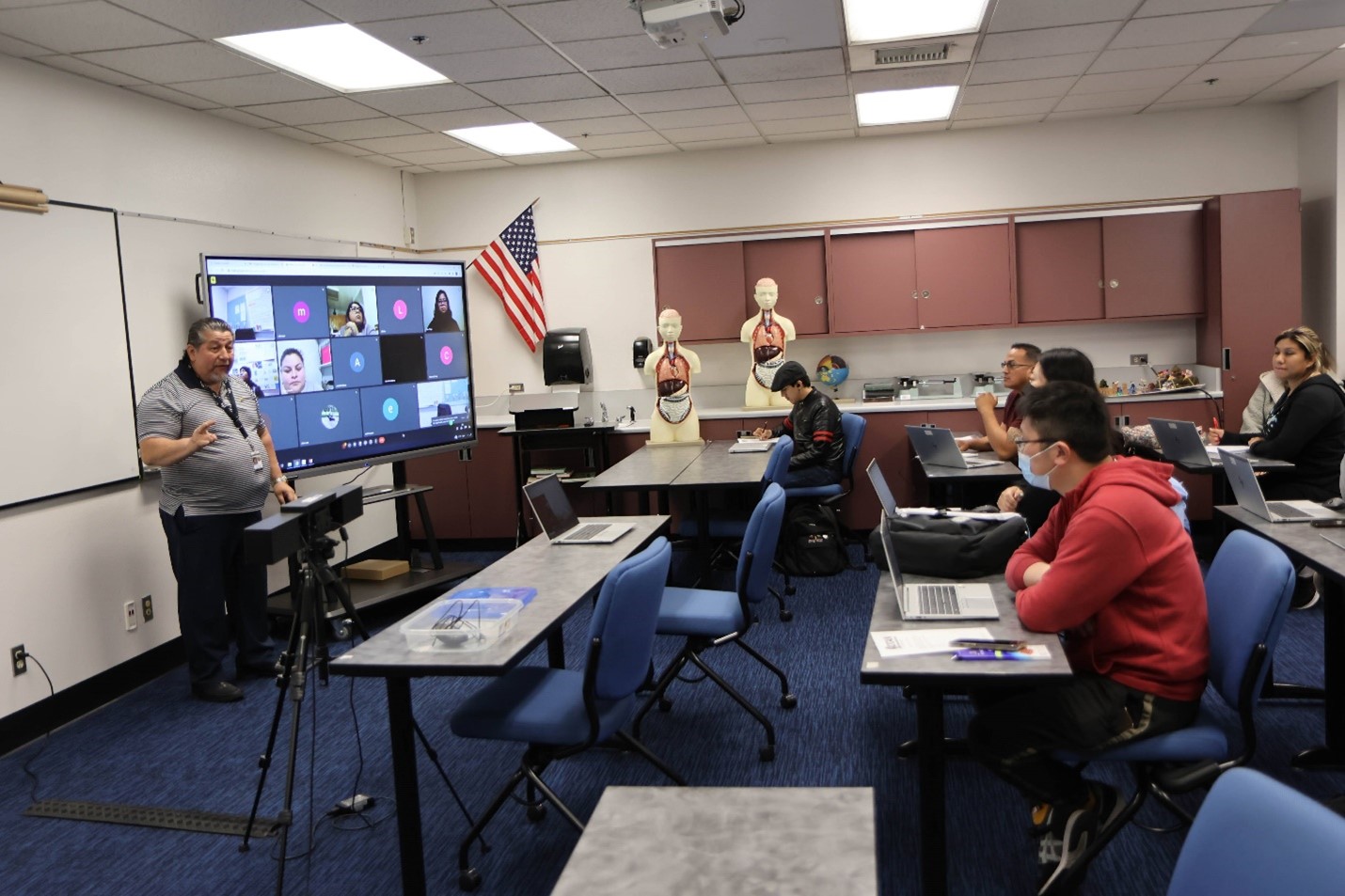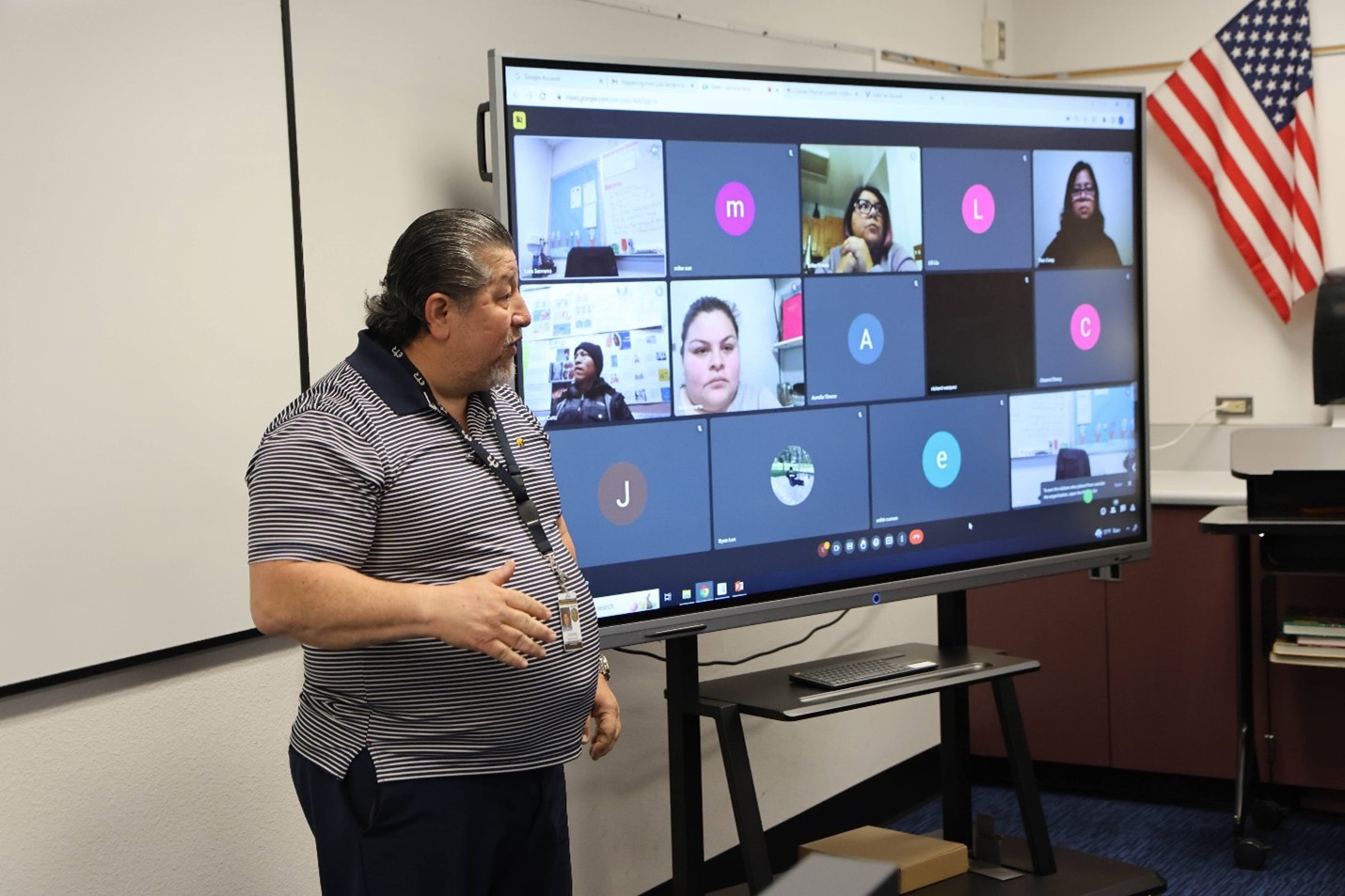HyFlex in Action: Revolutionizing Adult Education with Flexible Learning Models
by Alisa Takeuchi, OTAN Subject Matter Expert
The HyFlex (Hybrid-Flexible) model of instruction has gained significant traction in adult education, especially in the aftermath of the COVID-19 pandemic. This instructional approach allows students to choose between attending classes in person, participating online in real-time, (simultaneous instruction) or engaging with course materials asynchronously. (Only some agencies do the asynchronous option) As adult education continues to evolve, the HyFlex model offers a promising alternative to traditional and fully online instructional methods, but its effectiveness and implementation challenges must be carefully considered.

Effectiveness of the HyFlex Model
Recent studies from 2021 to 2024 have shown mixed but generally positive results regarding the effectiveness of the HyFlex model compared to traditional and online-only instruction. For instance, a multi-semester analysis revealed that students in HyFlex courses had lower DFW (Drop, Fail, Withdrawal) rates by approximately 9% compared to other modalities, indicating a higher overall success rate. However, these benefits were closely tied to the quality of faculty training and support, with courses taught by less-prepared instructors showing higher DFW rates. (EDUCAUSE Review,SpringerLink). Watch the video from CASAS Specialist Kay Hartley from TDLS 2022. Successful Ideas for Creating Hybrid Flexible (HyFlex) Instruction. Kay hosts a panel of experts in the field on their experiences using HyFlex and the data of student outcomes from the school year.
In contrast, some institutions experienced a “Trough of Disillusionment” with HyFlex, particularly in the 2022-2023 period. Initial excitement gave way to challenges such as the increased demand on faculty to manage multiple modes of delivery and varying degrees of student engagement across formats. Nonetheless, many institutions have begun to refine their approaches, leading to broader adoption and integration of HyFlex methods across diverse educational settings. (HyFlex Learning). Many administrators found that the more ongoing professional develop that was budgeted from the beginning produced more self-confident staff and higher rates of buy in.
Essential Equipment for HyFlex Classrooms
Implementing HyFlex in adult education requires a robust technological infrastructure. Key equipment could include:
- Video Teleconferencing Software: Facilitates real-time interaction between in-person and online students.
- Multiple Screens with Interactive Capabilities: Allows instructors to display content simultaneously to both in-person and online students, enhancing engagement.
- Tracking Cameras and High-Quality Microphones: Ensure that online students can follow the instructor’s movements and hear clearly, creating a more immersive experience.
- Touchscreen Whiteboards: Enable dynamic and interactive content delivery, which can be shared with both in-person and online students.
Administrative Considerations for Implementing HyFlex
For administrators looking to implement a HyFlex model, several critical tasks must be addressed:
- Assessing Technological Infrastructure: Evaluate and upgrade classroom technology to support HyFlex delivery.
- Faculty Training and Development: Provide comprehensive training for instructors to manage multi-modal delivery effectively. This includes ongoing professional development, particularly for courses that may present more significant challenges, such as STEM disciplines.
- Student Orientation and Support: Develop orientation programs that help students understand how to navigate HyFlex courses and utilize the available technology. Student orientation programs should not only introduce the HyFlex format but also ensure that learners have access to the digital literacy skills necessary for success. Chapter 5 of the California Digital Learning Guidance highlights the importance of equipping students with these skills, as well as the principles and benefits of this model, which is especially relevant in flexible learning environments.
- Collaboration with IT Departments: Ensure continuous support and troubleshooting to maintain the seamless operation of HyFlex technology.
- Monitoring and Evaluation: Regularly collect and analyze data on student performance and engagement in HyFlex courses to refine and improve the model. (HyFlex Learning,SpringerLink).
Tips and Tools for Engaging Both Online and In-Person Students
Engaging students in a HyFlex environment requires deliberate strategies:
- Interactive Polling Tools: Use tools like Poll Everywhere or Kahoot! to engage both in-person and online students simultaneously.
- Discussion Forums and Collaborative Platforms: Encourage asynchronous participation through platforms like Canvas or Google Classroom, which allow students to engage with peers and instructors at their convenience.
- Real-Time Feedback Mechanisms: Implement quick feedback loops using tools like Google Forms or Zoom polls to gauge student understanding and adjust teaching strategies in real-time.
- Peer Learning Opportunities: Facilitate group work that includes both in-person and online participants, ensuring that all students can contribute and benefit from peer learning (HyFlex Learning,EDUCAUSE Review).

Conclusion
The HyFlex model holds significant potential for adult education, offering flexibility and increased access to learning opportunities. However, its success depends on careful planning, substantial investment in technology, and ongoing support for both instructors and students. As institutions continue to navigate the challenges and opportunities presented by HyFlex, it is crucial to remain adaptable and responsive to the needs of all learners. With the right approach, HyFlex can enhance the educational experience, making learning more accessible and effective for diverse adult learners. For even more information and resources, read David Rosen’s article in LINCS. New free Guide to HyFlex models in adult foundational education.

